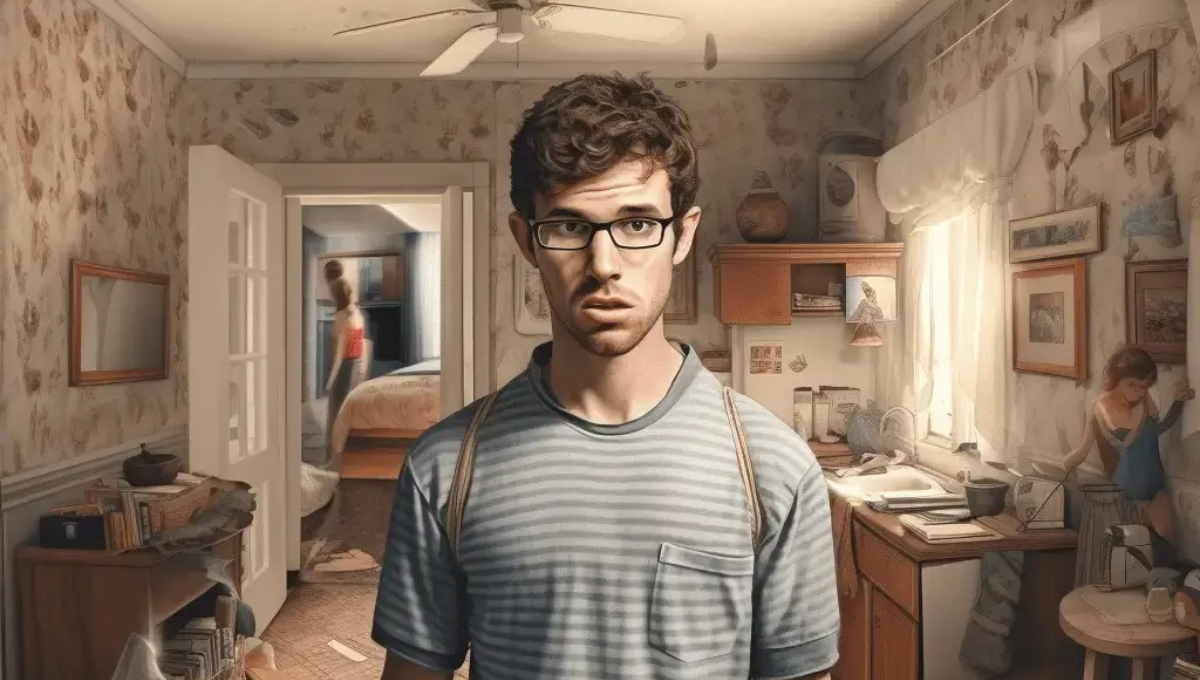5 Types of Hoarding
We often associate hoarding with the accumulation of material possessions, but it goes way beyond that. There are 5 types of hoarding. Hoarding encompasses accumulating excessive material goods and wealth, maintaining toxic or unfulfilling relationships, clinging to beliefs that no longer serve us or society, collecting items with no intrinsic value or purpose, and consuming excessive amounts of food leading to being overweight.
Thus, hoarding can manifest as an attachment to material wealth, unhealthy relationships, outdated ideologies, worthless items, and excessive weight.
Let me introduce you to a fascinating concept I’ve termed the “Theory of Hoarding“. This idea is entirely my own invention; I’ve never come across it elsewhere, so I believe I can claim it as my own. Before diving into the details, let’s discuss my understanding of ideas. To me, an idea emerges when we merge one concept with another in a fresh, innovative manner. While the individual components of any idea might have been contemplated or implemented in various contexts, it’s the unique combination that results in a novel idea.
5 Types of Hoarding
| Type of Hoarding | Description | |
| 1 | Material Wealth | Accumulating excessive material possessions and wealth |
| 2 | Unhealthy Relationships | Maintaining toxic or unfulfilling relationships |
| 3 | Outdated Ideologies | Holding onto beliefs that no longer serve us or society |
| 4 | Worthless Accumulations | Collecting items with no intrinsic value or purpose |
| 5 | Excess Weight | Consuming excessive amounts of food leads to weight gain |
1. Excess Weight
The Theory of Hoarding goes beyond simply accumulating material possessions; it covers various aspects of our lives, including our own bodies. Evolutionarily speaking, our ancestors, the cavemen, lived in uncertain times when resources such as food and security were scarce. This uncertainty led them to accumulate calorie-rich food whenever they could.
Fast forward to the present, our genes and mentality remain the same, but the dynamics have changed. Scarcity has largely disappeared, especially in the Western world where food is abundant. However, we still consume as much as we can, often unconsciously, thinking that scarcity might be just around the corner. This leads to the accumulation of excess weight around our waistlines.
2. Material Wealth
The same logic applies to wealth accumulation. Throughout our working lives, we accumulate wealth in anticipation of retirement, when we will no longer generate income. Unfortunately, many people miscalculate and accumulate too much wealth, neglecting other aspects of their lives. This can lead to unintended consequences for the next generation, such as sibling rivalry, disputes, resentment, and a lack of motivation to work hard and achieve success.
3. Worthless Accumulations
The concept of hoarding can also be seen in the way we hold onto clothes, shoes, and other possessions. We keep items thinking we might need them for special occasions or future adventures, but those occasions often never materialize. Similarly, we accumulate books that we never read, merely turning them into decoration pieces on our shelves.
4. Unhealthy Relationships
Hoarding can also extend to relationships, where we hold onto connections with people who may not share our values or beliefs, thinking they might be useful one day. However, these relationships often do not provide any real benefit and can even be detrimental.
5. Outdated Ideologies
Lastly, we hold onto outdated ideologies and theories that are no longer relevant or beneficial to our well-being or the progress of humanity. Clinging to such beliefs can hinder our growth and limit our ability to adapt to the ever-changing world around us. By examining our mindset and consciously choosing to let go of obsolete ideas, we can cultivate a more open-minded perspective and embrace new ways of thinking that promote harmony, happiness, and progress.
In conclusion, hoarding can take many forms in our lives, such as excess weight, wealth, material possessions, unproductive relationships, and outdated ideologies. We often miscalculate the balance between accumulation and reduction, over-accumulating and under-distributing or reducing. To live a more balanced and fulfilling life, it’s essential to recognize and address these various forms of hoarding.
In an ideal situation, as you approach the end of your life, there should be no residual possessions or unresolved issues. You should not have excess wealth, negative relationships, outdated ideologies, or any unnecessary worldly accumulations, because none of these can be carried with you when you go. The goal should be to cleanse yourself of these burdens as you move toward your final moments.
In reality, however, we tend to accumulate more and more possessions and concerns throughout our lives. The key to a balanced life is maintaining a sense of equilibrium, both internally and externally. This means carrying the right amount of money, having a balanced personality, and engaging in appropriate behaviors. Focus on carrying just the right amount of everything you need each day, then extend that approach to the rest of your life.
Strive to maintain a homeostatic state at the cellular and molecular levels, and handle each day’s problems as they come, without worrying too much about the future. Be present in the moment and avoid hoarding unnecessary things. Excess possessions, ideologies, and unfruitful relationships only add stress to your life.
Money can be both a blessing and a curse. While it can provide security, it can also become a source of stress as you try to protect it from those who want to take it from you. Instead, aim to live a life where nothing unnecessary sticks to you, and you can easily let go of new ventures or ideas that do not align with your personal goals.
Financial advisors often paint a daunting picture of the wealth needed for a comfortable retirement, causing many to work tirelessly for decades to reach that magic number. However, when they finally retire with their hard-earned money, they often find that they don’t need as much as they thought. Expenses are reduced, and the imagined luxurious lifestyle never materializes.
The moral of the story is to crunch your numbers and avoid miscalculating your life. Ensure you calculate your needs accurately and don’t waste time pursuing unnecessary goals or possessions. Time wasted cannot be regained, so focus on living a balanced and fulfilling life.
In a bustling marketplace, Sheikh Saadi, a renowned and wise scholar, encountered a man counting a bag of gold coins, visibly troubled by the fear of losing his accumulated wealth. Sheikh Saadi, known for his profound wisdom and guidance, advised him to bury the bag of gold coins in his backyard, initially perplexing the man.
However, as time passed, the man’s worries gradually diminished, finding peace of mind by letting go of the burden of protecting his wealth. Sheikh Saadi, revered for his insightful teachings, revealed that true wealth lies in finding tranquility within, detached from the anxieties of material possessions.
This story highlights the transformative power of relinquishing attachment to worldly possessions. By embracing a mindset of detachment, we can free ourselves from the burdens of constant worry and fear, allowing us to discover true wealth in the form of inner peace and contentment.
The Five Neighbors and the Theory of Hoarding: A Tale of Transformation
Once upon a time, in a quaint little town, there lived five neighbors, each embodying a different form of hoarding: Wealthy Walter, Materialistic Mary, Relationship-Rich Rebecca, Ideological Ivan, and Overindulgent Oliver.
Wealthy Walter was known for accumulating vast amounts of wealth. He spent most of his days tirelessly working and saving every penny, always striving to achieve an even higher level of financial success. Despite his riches, Walter never seemed to find true happiness or contentment, as the constant pursuit of wealth consumed his entire life.
Materialistic Mary was obsessed with accumulating material possessions. She had a house filled with the latest gadgets, luxurious furniture, and an extensive wardrobe that she barely used. The more items Mary acquired, the more she desired. Unfortunately, her attachment to material goods left her feeling empty and unfulfilled.
Relationship-Rich Rebecca‘s form of hoarding revolved around her relationships. She surrounded herself with a vast social circle, maintaining superficial connections with countless individuals. Rebecca’s fear of loneliness drove her to keep adding to her network, but she never truly nurtured deep, meaningful relationships with those around her.
Ideological Ivan held tightly to outdated ideologies and beliefs. He was resistant to change and refused to entertain any new ideas or perspectives, even if they contradicted his current way of thinking. His stubbornness and unwillingness to adapt made it difficult for him to grow and evolve as a person.
Overindulgent Oliver‘s hoarding took the form of excess weight around his waistline. He consumed large quantities of food, never considering the importance of moderation and balance in his diet. As his waistline grew, so did his health problems, causing him to feel increasingly unhappy and physically uncomfortable.
One day, a wise Sufi named Shams Khan visited the town and called the five neighbors together. He shared with them the Theory of Hoarding and explained how their respective behaviors were preventing them from living fulfilling lives. He encouraged them to let go of their hoarding tendencies and find balance in their lives by focusing on what truly mattered.
Moved by Shams Khan’s words, Wealthy Walter started to share his wealth with those in need, discovering the joy and satisfaction that came from giving. Materialistic Mary learned to appreciate and cherish the items she already owned, finding happiness in simplicity.
Relationship-Rich Rebecca shifted her focus toward deepening her existing relationships, experiencing the warmth of genuine connections. Ideological Ivan, meanwhile, became more open-minded and receptive to new ideas, allowing personal growth and self-improvement. Overindulgent Oliver adopted a healthier lifestyle, learning to enjoy food in moderation and incorporating regular physical activity into his daily routine.
As each neighbor embraced change and let go of their hoarding tendencies, they found greater happiness, fulfillment, and peace within themselves. The town, too, transformed into a thriving, harmonious community where its residents learned the valuable lesson of finding balance in life and not holding onto things that no longer served them.
Moral of the Story
The moral of the story is that hoarding, in its various forms, can prevent us from living fulfilling lives. By letting go of excessive attachments and finding balance, we can experience greater happiness, contentment, and personal growth.

